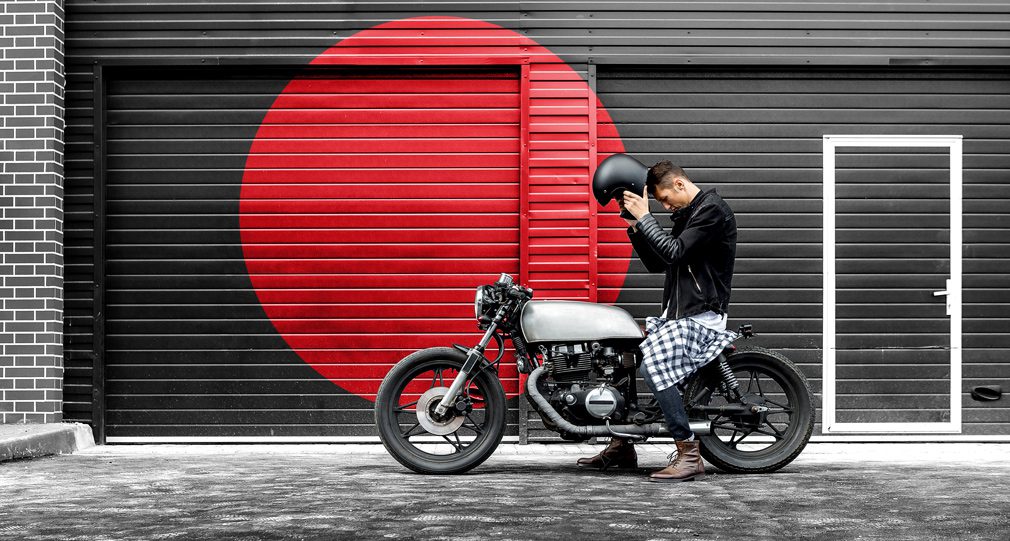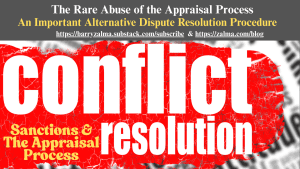14 ways to save money on the cost of your motorcycle insurance

Picture the scene: you’re in new leathers on your shiny bike, gliding through rolling countryside or perhaps along a glistening coastline with not a care in the world. Sounds nice, doesn’t it?
For some, reality comes crashing down at the point they get a quote for their motorcycle insurance. Why is it so expensive? How will you make your dreams come true when the premium is so high?
If this sounds familiar, don’t give up just yet. There are plenty of factors that comparison sites don’t take into account and that insurers don’t routinely ask about on online insurance quotes. And there is plenty of scope for you to bring down the cost of your bike insurance. Our top money-saving tips are below.
Many bikers are caught out by high premiums because they didn’t check the possible cost of insuring their new bike before buying them.
So, if you’re yet to buy a motorbike, consider this – the smaller, older or cheaper your bike is, the lower your premium is likely to be. Your heart may be pulling you in the direction of a TRON Light Cycle replica, but you may need to listen to your brain.
After all, a Dodge Tomahawk or Ducati Desmosedici may fit the fantasy perfectly, but if you can’t cough up the cost of the insurance cover, you won’t be able to ride it anyway.
As a general rule, try to avoid bikes with modifications that are made to enhance speed, such as engine modifications, performance exhausts and turbo charging. That said, not all modifications will affect your premium, so don’t discount a potential bike simply because it has cosmetic modifications or custom paint work. Just make sure your insurer knows about all modifications – failing to declare them could invalidate your policy.
Of course, the bike’s make, model and mods could be the one thing you’re not willing to compromise on. And why should you, if you’ve been looking forward to this purchase for years? Specialist insurance providers offer custom insurance policies, which will cater specifically to your needs.
1. Choose your bike carefully
Many bikers are caught out by high premiums because they didn’t check the possible cost of insuring their new bike before making their purchase. So, if you’re yet to buy a motorbike, consider this – the smaller, older or cheaper your bike is, the lower your premium is likely to be. Your heart may be pulling you in the direction of a TRON Light Cycle replica, but you may need to listen to your brain. After all, a Dodge Tomahawk or Ducati Desmosedici may fit the fantasy perfectly, but if you can’t cough up the cost of the insurance cover, you won’t be able to ride it anyway.
As a general rule, try to avoid bikes with modifications that are made to enhance speed, such as engine modifications, performance exhausts and turbo charging. That said, not all modifications will affect your premium, so don’t discount a potential bike simply because it has cosmetic modifications or custom paint work. Just make sure your insurer knows about all modifications – failing to declare them could invalidate your policy.
Of course, the bike’s make, model and mods could be the one thing you’re not willing to compromise on. And why should you, if you’ve been looking forward to this purchase for years of your life? Specialist insurance providers offer custom insurance policies, which will cater specifically to your needs.
2. Multiple bikes? Get a policy to cover all your bikes
One mistake that some motorbike collectors make is trying to insure each of their bikes separately. If you have two or more motorbikes, look into multi bike insurance – it can make a huge difference.
By insuring each motorbike separately, the specialist insurance company assumes that you may ride the bike at any time. Multi bike insurers like Bikesure, know you can only ride one bike at a time! This fact is reflected in a lower cost-per-bike premium.
3. Track your mileage
How many miles are you planning to do on your bike in the next 12 months? 3,000? 8,000? 15,000? It can be hard to guess. You don’t know what your priorities and commitment will be, or whether your biker mate finally says yes to the annual rally you’ve always pestered them about. As such, you probably estimate the mileage for your general commitments – travel to work, visiting family, annual holiday – and then add a bit on top ‘just in case’. That’s fine as well, but it may not reflect the reality, and it may mean you’re paying a higher premium than you need to.
Instead, start accurately tracking your mileage. Take a note or photo of the mileage meter on your bike at the start of your policy, and review it each month. If you’d predicted 12,000 miles per year and have only done 3,000 after six months, let your insurer know. It may be able to reduce your premium from that point. Even if it can’t, you can certainly use the information you’ve collected the next time you renew your policy. Don’t forget though that you’ll probably be riding more between April and September than you will between October and March, so take that into consideration as well.
If you ride rarely or only for short distances, you could consider capped or limited mileage insurance. These policies are specially underwritten for bikers who ride less. You will be asked to sign mileage declarations, which will be checked in the event of a claim – as always, honesty is the best policy.
4. Park your bike somewhere safe
One factor that your bike insurer will take into account when offering you a quote is where you keep your bike when you’re not riding it.
This is because there is a higher risk of it being stolen, tampered with or hit by passing traffic if it is left in public sight, for example on the road outside your house or in a public car park while you’re at work.
Simple measures such as keeping it in a locked garage or off-road could, therefore, result in a lower premium.
Don’t have a garage? You could rent one – there are plenty of services online – although depending on where you live, this may not be cheaper than your insurance quote. Or you could buy a secure bike shed for it to stay in at night. Whatever measure you take, it could protect your wallet too.
5. Make your bike more secure
If your bike is bigger than your garden shed or your partner has vetoed bringing it into the house, there are other ways to make it more secure. Even if you do have private parking at work or a garage at home, fitting certain pieces of kit could still save you money. Here’s the equipment to consider buying.
Tracking devices, particularly systems that are Thatcham Category 5-approved. These are fitted to your motorbike and can monitor its whereabouts if it has been stolen. Check out our guide to 7 of the best motorcycle trackers currently on the market.
Alarms and immobilisers are a great deterrent to potential thieves and usually come as a combo package. Having one installed on your bike will mean that the ignition will only start if an encrypted digital key is present. Check out our best motorbike alarm picks.
A disc lock is nicely portable and locks through the holes in the brake disc to immobilise the bike. It can be easy to forget they’re attached so use a reminder on your ignition to spare your blushes as you try to ride off with it still in place! Here are our six best disc locks.
The best way to secure your bike is to use all five security measures. Look for items that are “Sold Secure Gold” approved as many insurers will require this if they are to agree to a discounted premium.
Alternatively, check with your insurer for which makes and models it approves before you make a purchase.
6. Improve your riding skills
Your insurance company wants to know that you’ll be riding your bike safely. One speeding conviction could bump up your premium by around 10%, but two may cost you up to 25% more. If you have a conviction for driving uninsured, it can increase your premium by 50%.
On the other hand, if you can prove to your insurer that you are a skilled and sensible rider, it may result in a lower premium. A great way to show this is by taking an insurer-approved advanced riding class.
The government runs an Enhanced Rider Scheme, comprising an initial ride to assess your skill level and a bespoke training plan. Upon completion, you’ll be awarded a DVSA Certificate of Competence, which will secure you a discount with most insurance companies.
Alternatively, there are plenty of organisations offering advanced riding classes, including the Royal Society for the Prevention of Accidents (RoSPA) and the Institute of Advanced Motorists (IAM).
Instructors are often serving or ex-police officers, and there is usually a focus on confidence in different riding conditions and on different roads.
The cost of the motorcycle training course may seem high, but think of it as an investment – you’ll be saving on insurance premiums for years to come. You’ll probably save on your fuel consumption too.
7. Pay annually
Paying your insurance in monthly instalments can seem like you’re saving money, because monthly is what you’re used to. If you work, you’re probably paid monthly and other expenses such as phone bills are usually paid each month as well. But if you can get the lump sum together, paying annually can save you money with many insurers.
Insurance companies prefer you to pay annually so they don’t need to worry about overdue or missing payments – this makes you a safer investment.
On the other hand, paying monthly is basically a credit agreement with your insurer. You have committed to a 12-month contract of service with them but aren’t paying for it up front. This means that you’ll pay interest each month as you pay back the service you have technically already purchased.
8. Increase your excess
An excess is the amount you agree to pay for any repairs or other costs when you make a claim against your motorcycle insurance. For example, if you have an excess of £200 and an accident causes £300 worth of damage, you can only claim £100 towards the cost of repair. The excess can usually be recovered if there is evidence that the damage caused was not your fault.
A compulsory excess will be set by your insurance company – the amount may depend on your bike and your experience, with newer riders having a higher excess as they are deemed a higher risk.
On top of this, you can also add a voluntary excess, which will be for an amount determined by you. For example, if the compulsory excess is £200, you may decide to pay an additional £100 on top of any costs against a claim.
In general, the higher your voluntary excess, the less your insurance company needs to pay in the event of a claim and the lower your insurance premium will be.
Using the examples above, if you have £300 worth of damage and a combined excess of £300, the insurance company won’t need to pay you anything for your claim. They will, therefore, charge you less for your annual policy.
Just make sure you can afford to pay the excess if you do need to make a claim before committing to the amount in your policy.
Another possible option is to buy an “excess protector” policy that will cover your excess and usually costs less than the discount you’ll get for taking a higher voluntary excess. It’s certainly worthwhile considering and looking into.
9. Buy temporary insurance cover
If you only ride your motorbike during summer or to a few rallies, you may save money by buying a short-term policy, rather than insuring your bike for a full 12 months.
Be aware, however, that you must complete a statutory off-road notification (SORN) any time your motorbike is uninsured – even if you intend to ride it again in the future.
This may seem like unnecessary stress, but it can save you money. Not least because you can also cancel your vehicle tax and get a refund for any full months’ tax that you won’t be using. Plus, once you roll back around to summer, taxing your vehicle will automatically cancel your SORN – no extra paperwork!
Alternatively, you can buy laid up motorcycle insurance for the times you’re not using your bike. This covers your bike in case of theft or fire, but without the need to pay for full rider cover.
10. Make sure your policy reflects your usage
There are four main ‘classes’ of motorbike insurance, which are based on the main reasons people ride their bikes:
Social, domestic and pleasure covers holidays, travelling to the shops, running errands, taking a weekend ride etc.
Commuting is for when you ride your bike for pleasure and to and from your regular workplace.
Business use is for any time you use your bike for pleasure and work purposes, but not to a regular place of work. For example, if you ride your bike to multiple places of work, in connection with your business or to a training course or conference, or to a meeting.
Courier and delivery is for riders that use their bike to routinely deliver or collect goods.
Social, domestic and pleasure tends to be the cheapest policy, although commuting is unlikely to make a big impact on your premium.
However, business use and courier and delivery could be partly responsible for your high quotes. It’s therefore worth reviewing how you actually use your bike, and whether you can make any compromises to save money.
For example, you may find that an occasional taxi to an out-of-office meeting is cheaper than adding business use to your annual motorbike policy.
11. Build up a No Claims Bonus
A No Claims Discount is applied when the policy holder has a No Claims Bonus (NCB). This simply means that they haven’t claimed against their policy, showing that they are a lower risk to the insurance company.
Make sure the insurance company you choose offers a NCB. If you’re changing insurers, you’ll be required to show proof of your NCB which is usually accepted in the form of a renewal letter from your previous insurer, stating the years of NCB that you hold.
Unless you’re eligible for a No Claims Discount and have forgotten to account for this in your current insurance quotes, there is no instant way for a NCB to reduce your premium. But over the long term, it can save you – lots! In fact, these savings can be as much as 30% after one year, then rising annually to a maximum of 70%.
If you make a claim during your policy term – unless the damage isn’t your fault and the full costs can be recovered from the third party – you’ll lose your NCB (or some of it) and will have to start building it again.
However, many insurers also offer a NCB protection as an optional extra on their standard policy. Having this means that if you do make a claim, it won’t affect your NCB. It may be an additional cost, but it could still potentially save you hundreds.
Bikesure has policies that allow you to protect your no claims bonus from one year onwards, the industry standard is usually four years no claims before you can protect it.
12. Shop around!
One mistake that many people make, when getting any kind of insurance, is to accept the first quote they get.
Each insurance company differs in terms of what they offer and the premiums they charge. For example, you may find that two insurers offer the same quote, but that one includes legal cover and the other doesn’t. Or you may find a really cheap quote, only to discover that its policy terms don’t match your needs.
Shopping around for quotes is essential to understand what you can get for your money. You could use insurance comparison sites. This is a quick way to get an overview of what’s available. But don’t rely solely on these services. Not all insurers will be listed, and depending on the information you input, the figure you’re quoted may not be the final premium you end up paying.
The best way to get the lowest quote that matches all your needs is to contact multiple insurance companies. Many insurers have online forms that you can complete, but calling means you can explain your specific circumstances, get immediate answers to your questions and haggle. Of course, just because you can haggle, doesn’t mean you’ll get a lower price – but it’s always worth asking!
13. Don’t carry pillion passengers
To ride with a pillion, you must have the correct insurance. This is because a motorbike passenger adds risk in a way that doesn’t exist, for example, when riding in a car.
The extra weight can make the bike harder to manoeuvre, and if the passenger moves their body weight, it can throw off the bike’s balance. Not only does this add risk, but pillions can also claim against the policy in the event of an accident, making them a higher risk to the insurer in terms of costs possibly needing to be paid out.
If you don’t plan on carrying pillion passengers at any time, make sure your insurer knows this. If you have been quoted based on the assumption that you will ride with passengers, removing this from the policy will usually reduce your premium.
14. Join a motorcycle club or riders group
Members of a UK owners or riders clubs often receive discounts as “enthusiasts” represent a lower risk to insurance companies. They are considered as riders who appreciate and care for their bikes, rather than someone looking for a thrill or quick way to get around.
As well as offering discounts for members of owners clubs of various makes and models, Bikesure has also partnered with the British Motorcyclists Federation (BMF) and the Motorcycle Action Group (MAG) to offer members a discount of up to 25%.
BMF membership currently costs £28 a year, with savings for joint membership if another person in your household also rides. Meanwhile, MAG membership is £27 a year with joint membership for two adults priced at £40.50.
Time to reduce the cost of your motorbike insurance
Congratulations! You know everything there is to know about reducing the cost of your bike insurance. The only thing left to do now is deciding how to use those extra pennies you’ll be saving… another motorbike, perhaps? Check out our near-classics you can buy without breaking the bank.
Call Bikesure on 0330 123 1028 for a fast no-hassle quote – 81.5% of all customers receiving an online quote in August 2022 could have obtained a cheaper quote over the phone. Alternatively, request a callback at a time that is more convenient to you.
Insurance



















